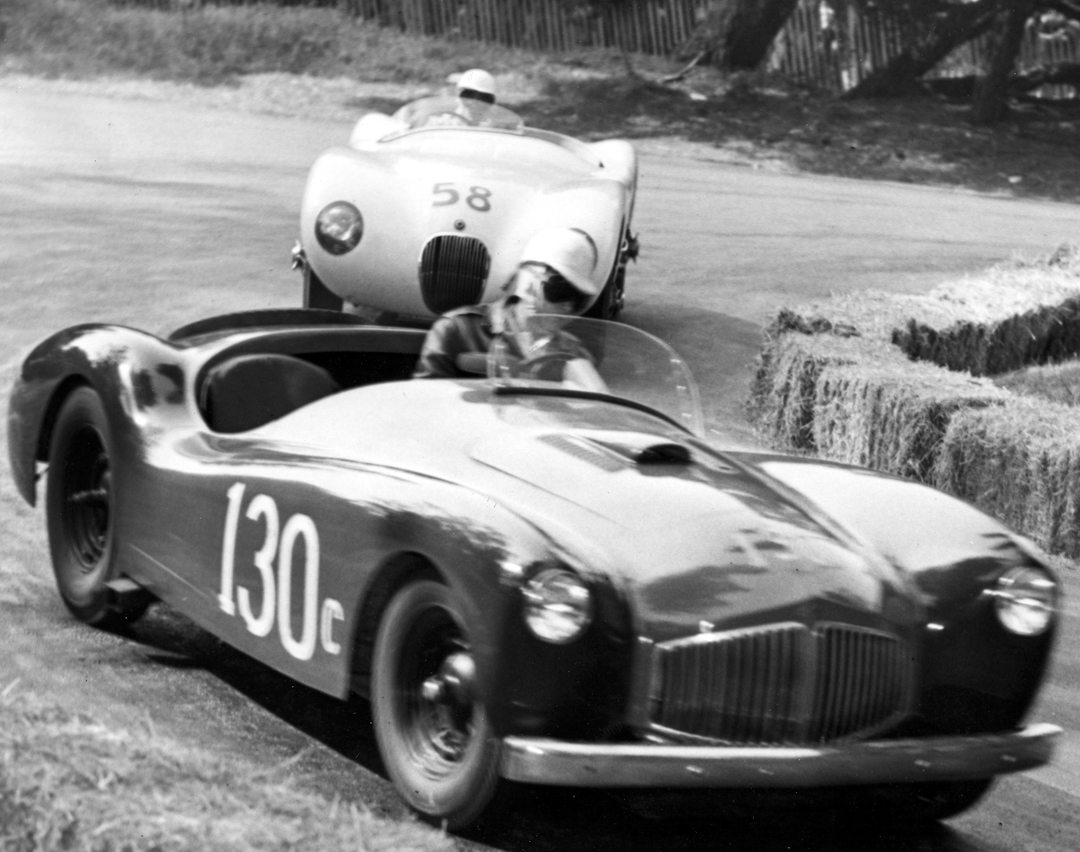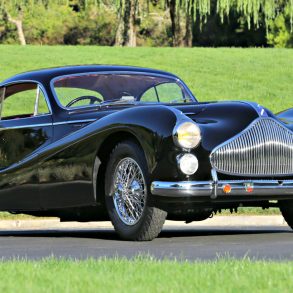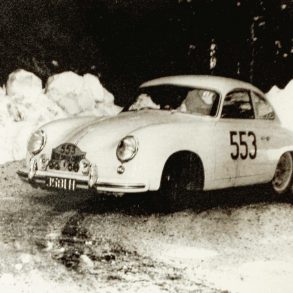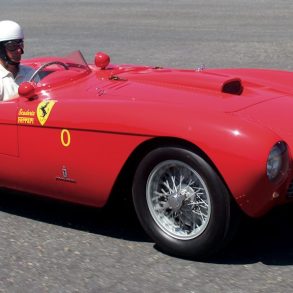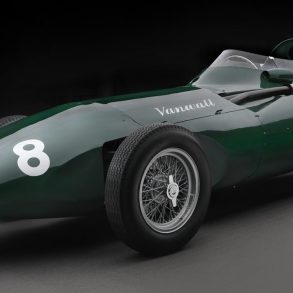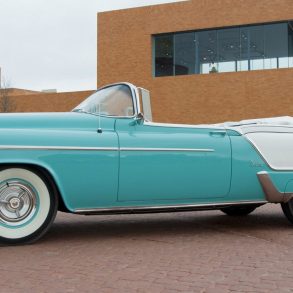This month’s awesome Hidden Treasure was discovered in 1995, sitting behind a house in Glendale, Arizona. How awesome? You tell me. It raced at Pebble Beach, was 1st in class at Santa Barbara with Bill Pollack at the wheel, was road raced with an Ardun-Mercury built by the legendary C.T. Automotive team…and that’s just for starters. The car is the 1953 Mameco-Ardun and what is so interesting is that a family discovered it in their own backyard after owning it for more than 25 years.
Bill Tritt is an American automotive legend. He’s credited with producing the first postwar fiberglass sports car, an achievement so important that The Smithsonian has one of his cars in their permanent collection. As part of a marketing campaign to promote his high-quality Glasspar fiberglass bodies, way back in 1953, Tritt assembled a professional team to build a racecar. This was no backyard effort. Tritt chose Ed Martindale and Ted Mangles (Mameco frame builders) to construct a special racing chassis. And C.T. Automotive, responsible for so many land speed records at Bonneville, was hired to build and maintain a powerful Ardun-Mercury engine to make the beast grunt. Tritt, of course, provided a lovely Glasspar G-2 body.
The Mameco-Ardun became the Glasspar factory racecar and people quickly took notice. In 1953, the car was raced at Pebble Beach, Golden Gate, Santa Barbara, and March Field. Warren Gerdes was leading in a Preliminary Race at Pebble Beach in April of 1953 until the car expired with an engine fire on the final lap. One month later, Gerdes finished 7th in the feature at Golden Gate. Pollack raced the car at Santa Barbara in September of ’53, finishing 1st in class and 3rd overall, behind Phil Hill (Ferrari) and Bill Stroppe (Kurtis). Pollack finished 6th two months later at a national race at March Field. According to Pollack, “That finish was one of my best, considering the awesome machinery and drivers I was up against.” The finishing order was as follows: John Fitch 1st (Cunningham C4-R); Briggs Cunningham 2nd (Cunningham C4-R); William Spears 3rd (Ferrari); Masten Gregory 4th (Jaguar C-Type); Jim Kimberly 5th (Ferrari); and Bill Pollack 6th (Mameco-Ardun).
Shortly after the ’53 season, Tritt sold the Ardun engine and drove the car on the street. Later, he sold the car and it ultimately vanished.
Enter Joe Lugo, who found a worn-out “kit car” with unknown history sitting in a pasture in Cashion, Arizona, in 1969. The chassis was without rust and the car rolled and steered. The body, damaged in spots from horses feeding on it, was obviously a Glasspar G-2 unit; the body tag read #G2353141. Joe gave $100 for the car, took it home, cleaned it up, and got it running.
In 1994, Joe’s son Robert, who has been in love with the thing for as long as he can remember, was finally able to negotiate a trade with his dad for the car. By this time, it had been parked and was definitely not a runner. Robert sorted it out and got it going, using it as his daily driver. But he had no idea what was about to happen next.
Whenever he could, Robert Lugo made his way to the monthly automotive swap meet at Glendale Community College. And every month he searched for literature on Glasspar, his favorite marque. Month after month he found nothing, not a single scrap. According to Robert, “One day I was thumbing through a stack of magazines a vendor had and stumbled onto the September 1953 issue of HONK magazine. There it was: finally, an article on a Glasspar. So I bought it.”
That afternoon, Robert began reviewing the article in detail. As he turned the pages, he thought to himself, “Hey, this Glasspar has an auxiliary dash pod for a tachometer just like my car. And it has trapezoidal air vents to cool the front brakes just like mine. And the chassis looks to be constructed the same way…and the firewall has holes in it exactly like my car. Wait a minute. This Glasspar isn’t like my car. It is my car!” The article was about Bill Tritt’s Ardun-powered factory racecar. An article with such detail and specification that it read like a construction manual. Lugo now knew the identity of the $100 car in the field. This was no homebuilt kit car, this was the long-lost mighty Mameco-Ardun.
Robert contacted Tritt and sent him pictures of his car. Tritt positively confirmed the car’s identity as being the Ardun-powered factory racecar. Lugo also contacted Ted Mangles who had built the frame. Mangles told Lugo that of all the Mameco frames they had built, Tritt’s Ardun-powered Glasspar was unique. When Lugo examined his car, he quickly found the special gusseting, used to improve strength and rigidity, which Mangles had described.
Lugo told a few of his local buddies about the car, but word of his discovery did not travel far. Although the car was “found,” essentially no one in the vintage racing community heard the exciting news. That’s where Geoff Hacker, Tampa-based automotive historian, comes into the story. Hacker has been busy researching the early history of American fiberglass sports cars for his upcoming book, Forgotten Fiberglass. During his research, he learned about the Mameco-Ardun and eventually found and contacted Lugo. According to Hacker, “It was obvious to me that Robert loved the old car that had been in his family since he was in diapers. It was also obvious that he wanted the car to be restored and returned to the races with its original drivetrain…something he could not afford to do.” Hacker put a friend of his who collects 1950s racecars and Lugo together. Six thousand miles of trucking, two Glasspars, a Chrysler Hemi engine, as well as some other goodies to Lugo, and a trade was consummated.
Now…are you ready for the twist at the end? This is my favorite part: Hacker’s friend is your author!
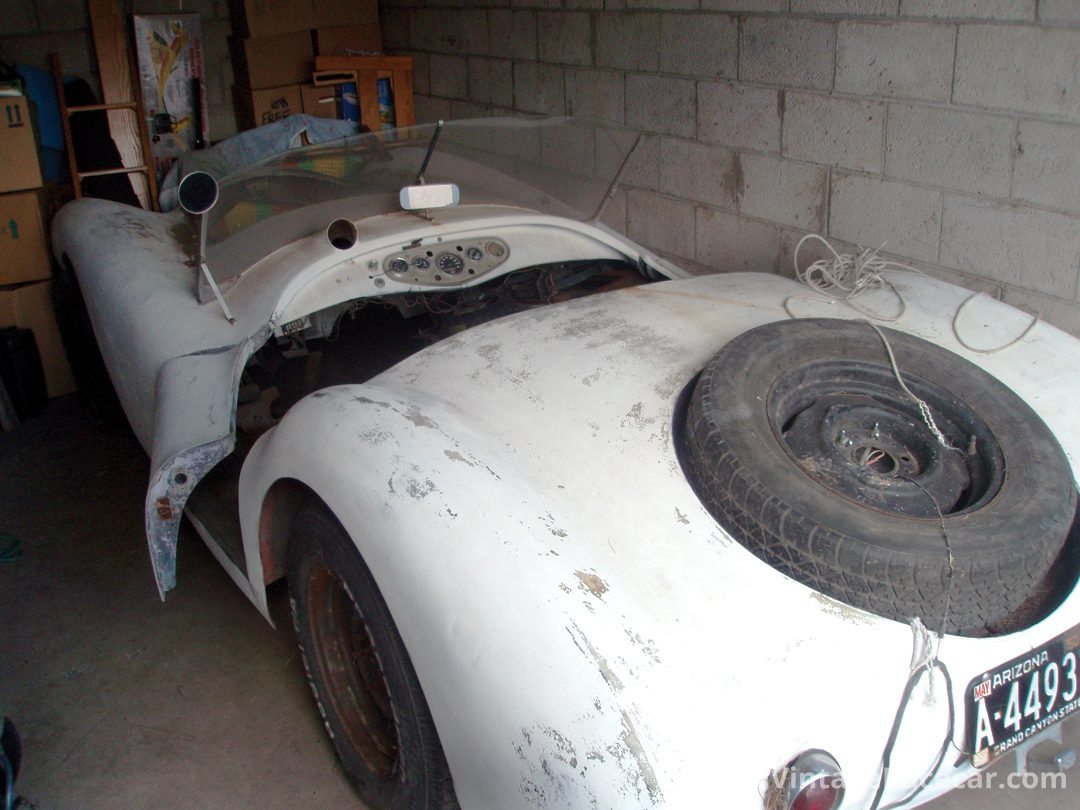
Do you know of a Hidden Treasure? If so, send your photos and stories to Mark at mbrinker@sportscardigest.com


